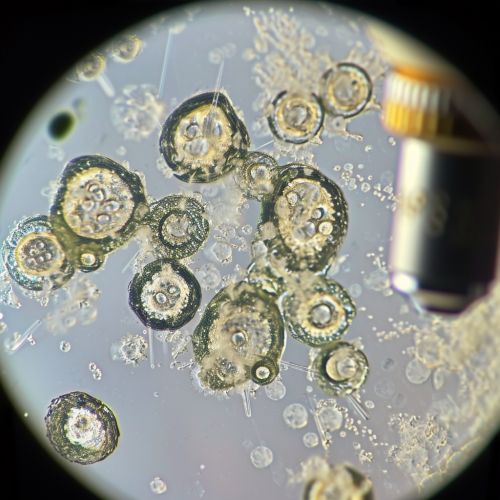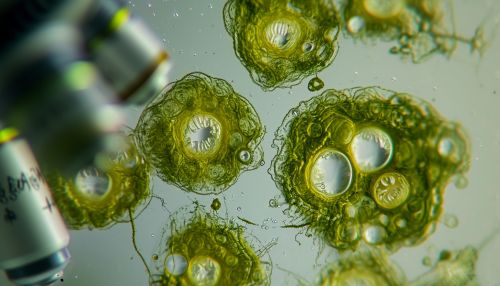Glaucophyta
Introduction
Glaucophyta, also known as glaucocystophytes or blue-green algae, is a group of freshwater unicellular algae that is unique due to its possession of a chloroplast known as a cyanelle or 'blue plastid'. This chloroplast is a remnant of a cyanobacterial endosymbiont, which was engulfed by the eukaryotic host cell in a process known as endosymbiosis.


Taxonomy and Phylogeny
The Glaucophyta is a small phylum consisting of about 13 to 15 species divided into two genera, Glaucocystis and Cyanophora. The taxonomy of Glaucophyta has been a subject of debate due to its unique characteristics. It is currently classified under the supergroup Plantae, which also includes the red and green algae and land plants. However, some researchers propose that it should be classified under a separate supergroup due to its distinct characteristics.
Morphology and Structure
Glaucophytes are unicellular organisms that are typically spherical or ovoid in shape. They possess a unique chloroplast known as a cyanelle, which retains a peptidoglycan layer between its two membranes. This is a characteristic feature of cyanobacteria, and is not found in the chloroplasts of other algae or plants. In addition to the cyanelle, glaucophytes also contain a nucleus, mitochondria, and other typical eukaryotic organelles.
Physiology and Metabolism
Glaucophytes are photosynthetic organisms that utilize light energy to convert carbon dioxide and water into glucose and oxygen. The process of photosynthesis in glaucophytes is similar to that in cyanobacteria, and is carried out in the cyanelle. Glaucophytes are also capable of heterotrophic growth in the absence of light, by absorbing organic compounds from their environment.
Ecology and Distribution
Glaucophytes are typically found in freshwater environments, although some species have been reported in marine and brackish environments. They are usually found in habitats with low light intensity, such as under ice or in deep waters. Glaucophytes are not known to form harmful algal blooms, and their ecological role in their habitats is not well understood.
Evolution
The Glaucophyta is considered to be one of the most primitive groups of algae, and its study provides insights into the early evolution of photosynthetic eukaryotes. The presence of a peptidoglycan layer in the cyanelle of glaucophytes is evidence of their ancient cyanobacterial ancestry. The Glaucophyta is believed to have diverged from other algae and plants before the loss of the peptidoglycan layer in their chloroplasts.
